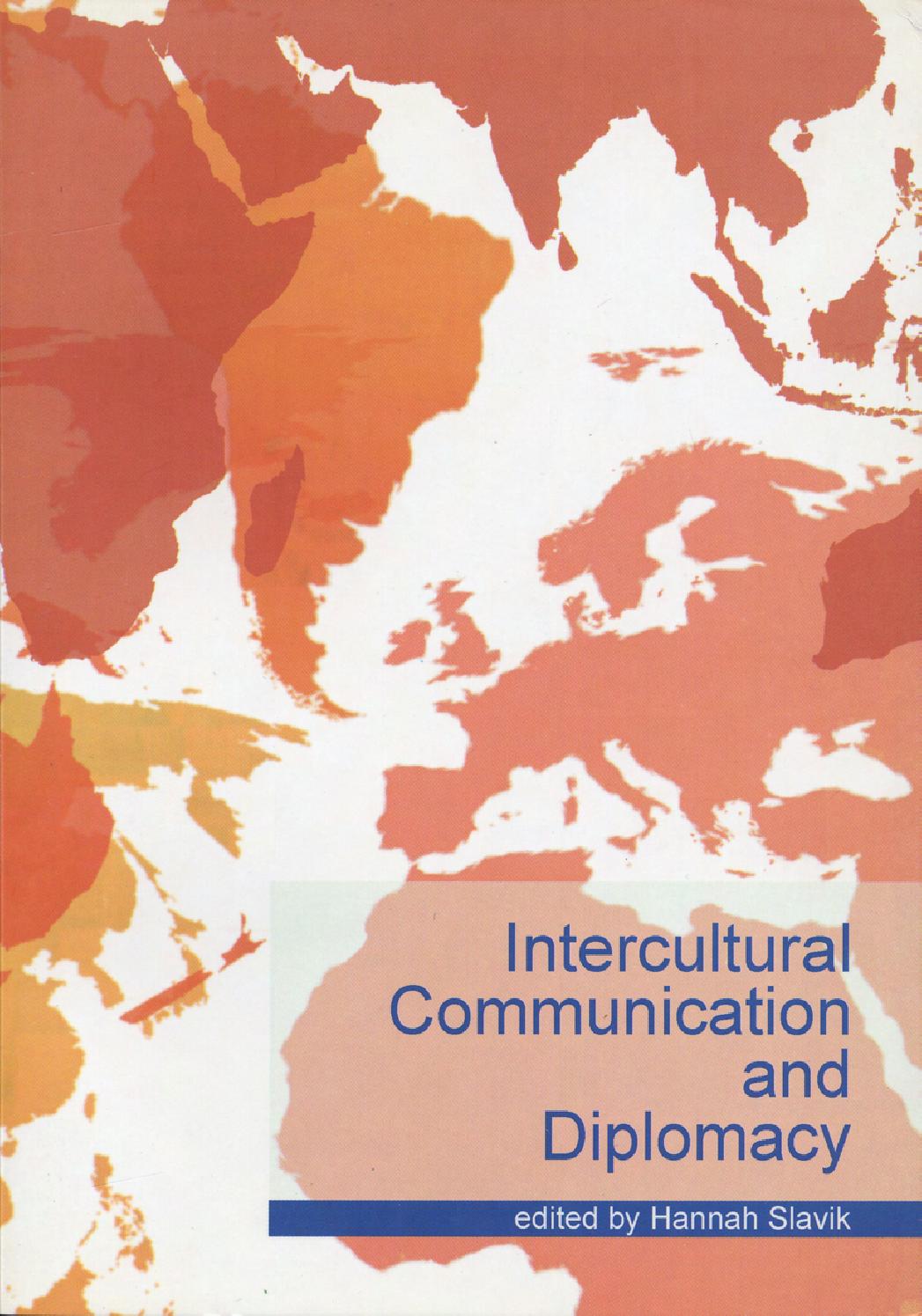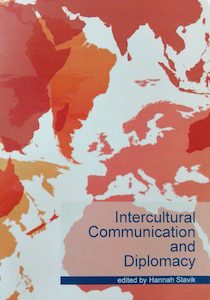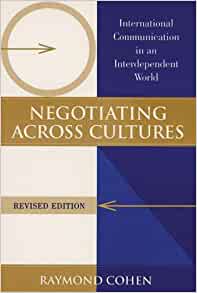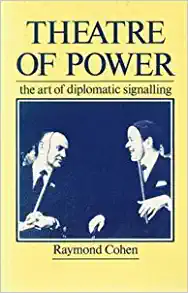For most rank-and-file dwellers in any country, diplomacy is virtually an unreachable dream world where half-gods live and act. The dream world has its own laws, strict and clear-cut rules with which all the half-gods are at ease, no matter from which part of that world they come. No misunderstandings are possible as a special protocol rule prescribes every step they take. They even look similar when you see them on TV.
In real life, however, the situation in the twentieth century is not quite as crystal-clear and serene as it may seem. It may have been close to the truth, however, somewhere in the seventeenth and eighteenth centuries. The reasons for that were manifold. First of all, there were few actor-states on the diplomatic map. Second, they were more or less homogeneous as far as political and economic systems were concerned. Third, the people who were involved in the area were, indeed, similar to each other. Their social (family) background was similar, if not identical, similar tutors educated them at home and they went to similar, prestigious private schools and to the same universities, of which not so many were around. They socialised in similar ways with similar types of people. They usually had similar life experience, expectations and aspirations.
However, even in the seventeenth century cross-cultural diplomatic misunderstandings occurred. As Anne and Serge Golon write in their historical novel, Angelique and the King, the Persian ambassador to the court of Louis XIV would not agree to go to Versailles “as a prisoner in a closed carriage, surrounded by armed warriors.” He also found it hard to come to grips with the idea that the beautiful woman who introduced herself to him (Angelique) was not a present the king had sent him as a sign of good will. 1Ann i Serj Golon, Anjelika i korol (Ekaterinburg, 1991), 153.
People who knew the values, rules and norms of behaviour in the respective cultures helped to solve this type of cross-cultural misunderstanding. For example, a letter had to be written to the Persian ambassador explaining that the woman in question was the bashi-hanum, that is, the oldest and indispensable wife of the French king and that other women would be sent as a present instead of her. As well, for the visit of the ambassador to Versailles the floors were covered with fresh flower petals and he was allowed to arrive on horseback together with his people, instead of in a closed carriage. On the other hand, a compromise was reached to accommodate the French rules as well, as the Persians did not wear their turbans in the presence of the king.
Modern Diplomacy
The collapse of the empires and, more significantly, the appearance of the new socialist states caused changes in the diplomatic world. A new type of political values, a new set of behaviours and, first and foremost, a completely new type of diplomat appeared in the arena. These new diplomats came from a more ordinary social background, without years of private school education and upper-class gatherings. Without any doubt, most of them were outstanding people who managed to function quite successfully in the diplomatic world.
The situation became even more complicated when international communication turned into intercultural communication in the last decade of the twentieth century with dramatic changes in the political map of the world.
On the one hand, one may think it most unlikely that any misunderstandings may take place when diplomats communicate since the strict rules of behaviour and the Almighty Protocol are still in place. On the other hand, as Alexander Burda, a famous Russian intellectual, said, “There can only be two viewpoints – mine and the wrong one.” No matter how educated, experienced, or tolerant a person is, deep at the bottom of our hearts we all share this conviction concerning norms and rules of behaviour. We all share the temptation to think and feel that other worlds are abnormal and that the only world that is normal is the one in which we live. This is where ethnocentrism, xenophobia and racism start. The reasons lie in the fact that culture is in many cases subconscious. If a small white dog bites you when you are four years old, you are unlikely to buy yourself a Bichon Frise when you grow up. What is more important, you never question yourself why you do not do it. In the diplomatic service, these attitudes can affect not just people but entire nations. 2See, for example, Kishan S. Rana, Bilateral Diplomacy (Geneva and Malta: DiploProjects, 2002), 201-212.
For example, undoubtedly diplomats from Moslem countries are perfectly well acquainted with the protocol, nevertheless they instinctively (i.e., culturally) avoid shaking hands with female diplomats at all costs.
These feelings do not necessarily manifest themselves in the form of a red-neck racism. At times, what on the surface appears to be respect for a host culture is in fact perceived as a demonstration of superiority. For example, at a lunch-time, middle of the week United States Information Service (USIS) event in a European post-Soviet country huge amounts of alcohol were served (contrary to the current trends in the US business lunch culture). This was perceived as an insult by the local participants who took it as a hint at the widely-spread drinking problem in that part of the world.
In another country, a Western European female diplomat praised the good work of her local female staff at a conference, saying that the young women took her as a progressive Western example of what democracy means for women, that is, the prospect of becoming an ambassador. The problem was that the country where the speech was delivered had its first female ambassador several decades before universal suffrage was introduced in the speaker’s country, and much earlier than the first woman was sent to a diplomatic mission.
Differences in Communication Styles
Differences in cultures manifest themselves in different styles of structuring discourse. The protocol-determined way in which diplomatic papers are written makes it easier for the parties involved to create shared meanings, the utmost objective of communication. However, pitfalls still occur, often related to the fact that in the modern world entire diplomatic missions may be changed or created virtually overnight. In some cases, staff new to the field have no time to study the rules and, hence, they make mistakes. Besides, as has already been said, culture is not always conscious, and feelings are more difficult to control than outward behaviour.
In meetings and negotiations, differences in the use of both verbal and non-verbal codes of communication become obvious. The lexical-semantic fields involved in diplomatic communication are more or less limited and are not expected to create problems. Nevertheless, even the use of the same language does not eliminate chances of incomplete or wrong interpretation. For example, an Austrian of Russian descent talking to an Austrian from Salzburg used the idiom “It is in his blood” referring to the behaviour of an aristocrat, to suggest that his behaviour was predetermined by his upbringing. The idiom was taken literally by the Salzburgian who pointed out that the blood of aristocrats and the blood of common people are just the same. Slavic and Germanic cultures have different approaches to the human body and base idioms on different lines.
As in any other sphere of life, a diplomat will naturally tend to follow the communication style of his/her culture. The following table, Communication Styles, summarises two distinct communication styles associated with different cultures. 3Adapted by R. Michael Paige, 1996, from J. Bennett, 1993. The so-called high-context cultures like China, Russia and France, are usually characterised by a non-direct, relational way of communication, where much depends on how well the communicants can read between the lines. Low-context cultures like the USA, Australia, and Germany mostly use straightforward, task-oriented styles and prefer to spell out every detail
Communication Styles

The structure of negotiations is largely determined by protocol. What protocol has no power to regulate are such things as differences in the talk-silence ratio, attention and respect manifestation rules, pauses, the meaning and use of interruption and the length of each element of the conversation with which each of the communicants are comfortable.
Argumentation and persuasion styles also vary from culture to culture. Obviously, to persuade your counterpart to accept your position it is much more productive to use warrants and arguments that appeal to the addressee and, certainly, to avoid issues that could bring discontent and be counterproductive. To do so, future diplomats have to learn the basics of different styles of persuasion: quasi-logical, emotional or analogical. What use is it to provide all kinds of material evidence to a Chinese individual when the Chinese culture holds no connection between objects and the actions of people? Or to appeal to witnesses talking to representatives of an African country who think that if a witness speaks up s/he has a hidden reason to do so?
For example, an IKEA representative was sent to an East European country to see what kind of business-links could be established, including when and where IKEA shops could be opened. It took IKEA over a year of futile attempts of directly approaching various factories and businesses to give up and say that the first IKEA store might appear in that country in about 50 years. 4From a private conversation carried out by the author. If the representative had taken a basic course in cross-cultural communication, he would have known that the best way to do business in that high-context, collectivistic country is through friends and connections. However, even between high-context cultures, negotiations at times fail to bring the expected results. As Kishan Rana has reminded us, at times when India was lobbying a question at the UNO, and had been promised support by a number of countries of the same region, when it came to voting the support was not given. 5Kishan S. Rana, “Language, Signaling and Diplomacy,” in Jovan Kurbalija and Hannah Slavik, eds., Language and diplomacy (Malta: DiploProjects, 2001), 108-109.
In all of these issues, and in many others, experience, linguistic sensitivity and talent can, to some extent, help a diplomat learn how to talk to different people. Undoubtedly, as well, special training in discourse types would be helpful to all foreign office employees. Even taking into consideration that learning a culture is a life-long process and that no “rules” or “norms” can ever apply to all representatives of a given culture, the more we know about the possible bumps, the faster we adapt to a new situation.
Training in Intercultural Communication
Undoubtedly, when a diplomat receives an assignment to a mission and arrives at the destination, s/he is exposed to a new world full of new “colours.” S/he has no option except to learn as soon as possible how to deal with all those new colours, or ways of behaving. So far, most diplomats have survived and done quite well. Then, one may ask, why study the theory of intercultural communication?
The answer is very plain and simple: times change and diplomats have little if any time for adaptation in the field. As well, since universities already are in the business of training diplomats, why not offer them a preparation in what they are supposed to be part of: cross-cultural communication? Why not provide diplomats in advance with as much culture-general and culture-specific knowledge as possible?
Verbal codes of communication can be taught first at a culture-general level and later, before going to a certain country, on a culture-specific level. While the non-verbal codes of communication that provide over half of the information we get are even more difficult to learn or teach, and while the best way to learn them is to be within a culture, nonetheless, the theory of non-verbal codes of communication is an integral part of a course in intercultural communication. The case when Lady D. almost created a breach in Arab-UK communication having involuntarily half-shown an Arab prince the sole of her shoe is well-known. In the Arab world showing the sole of your shoe to the interlocutor is considered to be a gross offence.
Unfortunately, we cannot yet point to data on the impact of intercultural training on the performance of diplomats. However, experience in teaching “Theory and Practice of Intercultural Communication” at the Lublin University International Relations Department, in Poland, has resulted in great enthusiasm on the part of the students and it seems likely to have a positive impact on the quality of training.
The contents of a course on intercultural communication should, above all, include training in cultural awareness. Three components are vital:
- a theoretical component: presentation of the reasons that cultures are different, and of salient features forming cultural patterns (as suggested by F. Kluckhohn and G. Stroedbeck);
- a practical component: exposure to and analysis of differences/similarities of beliefs, values and norms functioning in various cultures; and
- a personal component: a look at the native culture of the students, building an awareness of its features and of its place within the system of other cultures.
It can hardly be expected that a relatively short course is capable of radically changing the deep-rooted feelings of the participants; as a matter of fact, theoretical courses and training sessions in intercultural education mainly serve the task of an eye-opener, preparing the participants to work in a cross-cultural setting. However, even drawing attention to the psychological basics of ethnocentrism could be a good impetus for the formation of empathy, tolerance, acceptance, respect and cultural enrichment.
The next issue that arises is the structure of the course and the appropriate time for courses in intercultural communication to be taught. The earlier in their studying careers that students take the course, the better. For example, in those universities that provide additional language training for future diplomats, some elements of cross-cultural training can be included in the respective language courses.
It appears that at least two possible steps must be included in the intercultural training of diplomats. First, an introductory course in theory of intercultural communication should be presented. Depending on the time available, this may be either an intensive two to three week course (see the outline of a sample course below) or, better, a semester long one of at least 40 hours, where a large number of examples can be presented and analysed, and where reports, written works and projects can be presented. In case students specialise in a certain region of the world, another course can be added, concentrating on the features common for the area.
After such initial training, in an ideal world, upon the receipt of each assignment a diplomat should:
- receive a cross-cultural information pack and training;
- receive on-site help from someone who is more familiar with the local cultural bumps and opportunities; and
- have the option to appeal for assistance from intercultural specialists at the Foreign Office.
As well, an intercultural specialist should be available in the analytical departments of Foreign Offices.
In the long run, interculturalists and diplomats have a common objective, to provide for peace and understanding in the world, and this objective can be achieved only through their joint efforts.
Sample course outline: THEORY AND PRACTICE OF INTERCULTURAL COMMUNICATION
To know how other people behave takes intelligence, but to know myself takes wisdom. – John Heider, The Tao of Leadership, 1998
Today the world is becoming smaller and smaller – distances shrink and become irrelevant, information flows are immense and very fast. People tend to speak foreign languages and, to their surprise, find out that this is not enough. There is more to it, and it is culture.
It is of paramount importance to educate a generation of people capable of communicating effectively and working together with representatives of other cultures. This course is designed to further this aim. The objective of the course is to help students realise the salient features of their own culture, to compare it with other cultures and to learn to communicate with people respecting the differences and making the best possible use of them.
The course aims at providing:
- culture-general and culture-specific knowledge;
- the groundwork for the formation of necessary intercultural communication skills;
- the capability to analyse a person’s system of values and to adapt it to new situations.
The contents of the course cover the following areas:
- Introduction of basic terms (culture, communication, intercultural communication, nation, inter-, cross-, and intra-cultural communication, intercultural communication competence)
- Factors that make cultures different
- Universal and specific features of cultures
- Some taxonomies of cultures
- Verbal and non-verbal codes of intercultural communication, their interrelations and interdependence
- Culture-specific discourse structure (texts, persuasion, conflicts)
- Interpersonal communication across cultures
- Media and intercultural communication
- Intercultural business communication
- Acculturation models, problems, culture shock
The issues to be discussed include, but are not limited to the following:
Topic 1: Introduction and Main Terms
- Culture and its features
- Nation, Race, Subculture
- Communication, its features and types
- Intercultural communication, connected terms
- Intercultural competence
Topic 2: Why Do Cultures Differ?
- “Ecology” of culture
- “Biology” of culture
- History
- Technology
- Institutions
- Models of interpersonal communication
Topic 3: Cultural Models
- Definition
- Grounds for model formation (Kluckhohn)
- Components of models: beliefs, values, norms
Topic 4: Taxonomies of Cultures
- High- and low-context cultures (Hall)
- Hofstede’s taxonomy
- Other taxonomies
Topic 5: Verbal Codes of Communication
- Language and communication
- Definition and levels of verbal codes
- The Sapir-Whorf hypothesis
- Language and self-identification
Topic 6: Non-Verbal Codes of Communication
- Definition, characteristics
- Interrelation of verbal and non-verbal codes
- Universal and culture-specific codes
- Kinesics
- Space
- Touch
- Time
- Vocal codes, silence
- Other non-verbal codes
Topic 7: Culture-Specific Discourse Structure
- Translation
- Text structure
- Argumentation process, components, styles
- Dialogue structure, value of silence
- Conflict and conflict resolution styles
Topic 8: Interpersonal Communication
- Types of interpersonal relations
- Communication situations
- Uncertainty reduction
- Self-disclosure
Topic 9: Acculturation Processes and Problems
- Types of acculturation
- Cultural shock
- Ethnocentrism
- Stereotypes
- Prejudices
- Racism
Topic 10: Professional Application of Intercultural Communication Basics
- Business communication
- International communication






